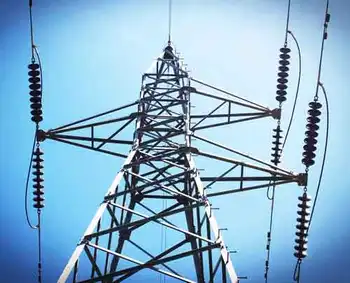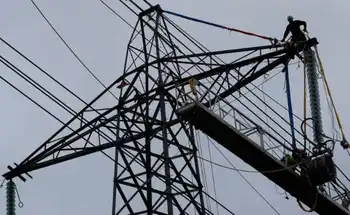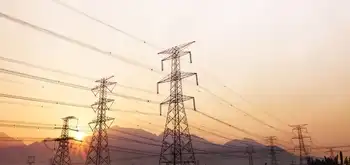Alberta Power Grid in 'Critical' Condition
EDMONTON - - If the lone highway between Edmonton and Calgary was only two lanes wide, the congested traffic would be similar to the electricity currently crowding its way through Alberta's transmission system.
Increased demand and generation of electricity has left the system stretched thin as power travels through the high-voltage wires and past the wide steel towers. Even though the amount of power generated in Alberta increased 25 per cent from 1998 -2002 alone, the 20,000-kilometre system hasn't been expanded in 17 years.
"The load is going to grow to the point where the existing system no longer performs adequately," says Neil Brausen, director of system planning at the Alberta Electric System Operator, the provincial agency that plans Alberta's interconnected power system.
"At that point ... something has to be in place to maintain the level of reliability. Otherwise, it will deteriorate, no question about it."
Some believe the current strain on the system is already critical and could have been avoided.
"Unfortunately, because of the uncertainty over electricity regulation and no long-term planning, we have significant bottlenecks in the system," says Liberal energy critic Hugh MacDonald.
On the construction side of the system, there is an eagerness to expand.
"We've been sitting back too much in the province and waiting for problems to happen rather than getting out in front of them," says Scott Thon, president of AltaLink, which owns the majority of Alberta's transmission lines.
Atco Electric is proposing to build a new, $100-million line from the Fort McMurray area southward that would expand the transmission capacity from the current 370 megawatts to 610 megawatts.
The Fort McMurray area has many cogeneration plants -- oilsands plants that produce their own electricity and then put the excess power onto the provincial grid, where it is moved south to more populated areas.
Although these wires are owned, built and maintained by investor-owned companies, the system is regulated by the Alberta Energy and Utilities Board.
The board approved Atco Electric's application for the line in April, but suggested that the line end in Whitefish, south of Lac la Biche, rather than the Fort Saskatchewan area, as Atco originally wanted.
"We've agreed to the option they've put in front of us to add alternative routing by amending our application," says Ken Kadis, Atco's manager of facilities planning. "They'd like us to provide more information so they can compare the two route options."
Currently, the route has been chosen and approved only as far as the McMillan substation, 170 kilometres south of Fort McMurray.
While the line is the only one approved, there are other areas of the province that are expected to follow.
"I think you're going to see an important expansion to the Edmonton and Calgary marketplaces," says Energy Minister Murray Smith. "In other words, from Wabamun to Edmonton and through to Calgary, serving that corridor."
Brausen agrees. "That line comprises the main backbone of the transmission system in Alberta. The Wabamun area represents still the single largest concentration of generation in the province."
Both TransAlta and Epcor have power plants in the Wabamun area.
AltaLink, which already owns more than 11,000 kilometres of lines in Alberta, is proposing to build a $230-million line linking Wabamun with Edmonton and Calgary.
"That's a real pinch point in the province," Thon says. "There's a lot of congestion today between Edmonton and Calgary and it's just going to get a lot worse."
Brausen says there will be expansion projects across Alberta in the next decade.
The construction of new cogeneration plants in the Cold Lake area and increased demand near Peace River has made expansion necessary. Wind generation has done the same in southwestern Alberta.
Brausen says there are about 50 smaller projects in the works, but the bigger ones need immediate attention. "We need to be doing the planning work right now."
Expansion of the system comes with some challenges.
The steel and wire has to go across somebody's land, and few people want it to be theirs. Much of the expansion can go across Crown land, or expand on existing lines, but not all of it.
"There are always landowner concerns," Thon says. "As a responsible owner and developer, you have to be out there early and dealing with landowners."
That means holding hearings with concerned members of the public, like Atco did for its proposed line from Fort McMurray. Historians, aboriginals and farmers all complained about the line disrupting their land.
"Can you imagine one of these high, big-powered transmission lines right next to you?" asked Harold West, a member of the Victoria Home Guard Historical Society. "Every day of your life you would have this. It's sickening."
Kadis says Atco is working to solve the dispute, should the original route be chosen. "We were aware of some of those potential issues, although they were very minor when we put the original route together."
Expansion doesn't come cheap. Massive amounts of money will have to be poured into construction and maintenance.
And the provincial government is sending the full bill directly to consumers -- homeowners, businesses and institutions.
While that has riled some, Smith stands by his decision.
"Residences in Alberta use about 15 per cent of all the electricity and farms use about five. That's the amount that those individuals would be expected to contribute," Smith says. "They would not be expected to pay for the entire cost of the expansion."
Related News

Scientists generate 'electricity from thin air.' Humidity could be a boundless source of energy.
WASHINGTON - Sure, we all complain about the humidity on a sweltering summer day. But it turns out that same humidity could be a source of clean, pollution-free energy, a new study shows.
"Air humidity is a vast, sustainable reservoir of energy that, unlike solar and wind, is continuously available," said the study, which was published recently in the journal Advanced Materials.
“This is very exciting,” said Xiaomeng Liu, a graduate student at the University of Massachusetts-Amherst, and the paper’s lead author. “We are opening up a wide door for harvesting clean electricity from thin air.”
In fact, researchers say, nearly any material…




